- Home
- Lloyd Jones
Mr Vogel Page 12
Mr Vogel Read online
Page 12
This was another nice, clean, crisp clue. Since I’d had my recent operation at the Robert Jones and Agnes Hunt Hospital at Gobowen, Shropshire, I knew immediately that Agnes Hunt had been a pioneer in orthopaedic care, and that Robert Jones was connected to the Bonesetters of Anglesey – so the bones of my story were knitting together nicely!
I sloughed off my languor and swung into action straight away. Yes, there was a book by Agnes Hunt, and yes, she had spent some time in Tasmania.
I loved the book. Dame Hunt has a no-nonsense style of writing which bustles into the reader’s presence like a good old-fashioned matron and describes everything clearly, efficiently, and entirely accurately. I fancy she would have shown some pity for this weakling epistle, recognising it immediately for what it is, a chronically spavined thing, but nevertheless, from human kindness, she would have given it plenty of fresh air and hope. It would be conveniently populist to say that she could have done the work of ten modern hospital administrators, but her sharp mind and her adamantine determination surely made her a formidable force. Her brief autobiography, This is my Life, is 206 pages of sheer entertainment.
Her family was as eccentric as they come, and for that reason I must tell you a little about them, so let’s unhitch our backpacks, sit in the shade of this magnificent ash tree, and have a bite to eat whilst I tell you the story of the Hunt family.
Agnes Hunt’s poor mother disliked children intensely but was doomed to produce eleven. At the age of nine Agnes got a bad blister on her heel, but because she was terrified of Victorian ‘cures’ she kept quiet. The result was delirium and what was then called general blood poisoning. ‘My apprenticeship to crippledom had begun, and also the great education of pain’, she wrote later.
It transpired that the Hunt family had fallen on hard times after the father’s death. Agnes says her chief recollection of him was that ‘he laughed immoderately at any accident we had’. In search of a future, their extremely eccentric mother had attended a lecture on Australia, and had been told, quite erroneously, that an island off the coast of Queensland could be bought quite cheaply, and the breeding of Angora goats was ‘a most paying proposition’.
This was quite enough to convince the idiosyncratic mater, and with missionary zeal she gathered her chicks like a hen and headed for the antipodes, as if Brisbane were at the bottom of the garden. Their adventures, during which they visited the Blue Mountains and the Jenolan Caves, are too numerous to recount here.
Eventually they arrived in Launceston, Tasmania, and headed up country, to an unfinished and ‘disgusting’ shack on a virgin patch of ground.
For a taste of the pioneering nature of their life, I give you this vignette which shows the dangers involved and Agnes’s resourcefulness in a crisis.
One day she was helping her brother Tom to clear the great gum trees which had fallen or had been felled. They had been stacked in huge pyres ready for burning – but one of the great trunks rolled onto Tom’s shoulders. She says:
Shaking in every limb, I limped round, thinking he must be dead, or that at least his back was broken. I was, therefore, very much relieved when I heard an irate voice from under the tree trunk ordering me in no uncertain terms to remove the something, something tree. I asked him if he could feel his legs, as I had heard that people with broken backs could not, but he told me not to be an ass but to get busy and remove the tree trunk, as it was hurting him confoundedly.
Agnes rode ten miles to a ranch to get help, and Tom was freed.
I was still obsessed with the idea that he had broken his back and could have no feeling in his legs, so, when I was changing his hot water bottles I stuck a pin into him. My mind was entirely relieved by the row he made and by the impolite names he called me.
Elsewhere, Agnes records the fate of a young man on a neighbouring ranch who, while felling trees alone, had met with a terrible death. Somehow a trunk had closed on his hand and he was found dead two months later. From the marks on his wrist it was evident that he had tried to gnaw his hand off.
I e-mailed some of these details to Williams and he replied quickly with information about the young man who died – he’d been a Welsh pioneer and his story had been featured in a book about the early immigrants. Williams sent an attachment with a picture of him. He had a youthful but full walrus moustache and a small bowler hat, a cob pipe clenched in his teeth and mournful eyes. I am intrigued by these odd twists of fate – that a picture of a Welshman should be sent, many years later, to another Welshman at the other end of the globe at the flick of a mouse. Here was a Welsh colonialist. I though: how often have I been forced to suppress dark thoughts about the incoming English in my own land, but my own race had colonised just as actively – in Australia, Tasmania, Patagonia, North America, and indeed in England itself. The Welsh Quakers had peeled off to Pennsylvania in the Lyon, the nonconformists had sailed off to Patagonia in the Mimosa, and a Nova Cambria had been established in Brazil. There was even a settlement in the Ukraine called Yuzovka (Hughesofca), now called Donetsk.
I was aware that the author of the Vogel papers had alluded to immigration as a negative force. But the English language he used so novelistically owed its power to the fact that it was an amazing meld of many languages introduced by successive invaders. Here was invasion of the body not by an illness-bearing microbe, but by a new serum; an antidote to sterility. Rationality, however, doesn’t help a minority facing extinction. There is a deep sadness always there.
Williams invited me to fly out to Tasmania and stay with him, but I declined politely. I cannot travel. The world frightens me too much. I can just about cope with it in books and on television. I might easily be an agoraphobic but for my need to walk. Even this is limited to my own country.
I pulled out a book on Tasmania.
The Last of the Tasmanians made depressing reading. The aboriginals who inhabited the island believed they were alone in the world. They were wandering hunters without settled habitation or a form of government. Their wooden spears killed kangaroos and wallabies, and their boomerangs brought down birds. They had no garments, except for animal skins worn on the upper body, and no homes, though they used windbreaks for shelter.
To incoming Europeans they represented the depths of barbarism. But they were neither stupid nor miserable. Their language was sophisticated and they had a lively sense of humour. Like the Eskimo, said the author, they lived entirely in the present. They made no stores in any way for the future. They foraged on what was around for the day, and let the morrow take care of itself. With no gods, no form of worship, their only fears were raised by the ‘dread voices of the constant storms, the darkness and the eyes of the Tasmanian Wolf and the Devil peering at them out of the blackness beyond the fire.’
He continued:
They did not have the slightest understanding of the laws of the universe. They were of the earth, content with one day’s food and gladness; so they lived, so had their fathers lived. Another wanderer came, another claimant of the bounding kangaroo. The aborigine saw a man like himself, but white of skin, clothed and armed with thunder stolen from the skies. But, far worse, the intruder brought mistrust and gloom to the island so long owned by the darker race.
The terrible fate of those simple people, who had lived in their own little Eden for so long, was horrific and sadistic. I wish I could say you can’t imagine what happened to them, but unfortunately you can. ‘Civilisation’ has given you all the tools and all the knowledge you need to be as uncivilised as you please.
Here is an interesting point for you. Before I started my walk around Wales I bought all the relevant maps. I became interested in maps per se. I studied the cartography of the Greeks, Agrippa and Ptolemy. I learnt about the Roman Peutinger Table and the Antonine Itinerary, and about the medieval rediscovery of the Ptolemaic maps and Mercator’s additions of latitude and longitude.
I pored over the early maps of Wales, particularly John Ogilby’s wonderful strip maps. It became apparent th
at Mercator’s lines, criss-crossing the globe, did more than make navigation much easier: they also created a vacuum. And we all know what happens to vacuums. Adventurers who studied those medieval maps, demarcating the world for the first time, knew which countries lay in some of the segments, but not in others, so they set out to fill in the blanks and complete the picture. It was like painting by numbers, and if you filled in more bits in red than the Spanish coloured in yellow you ended up with more land than they did. Early explorers were keenly aware that any land they discovered within Mercator’s empty bits was theirs simply because they got there first and were bigger than the other kids.
Another point: the ordnance survey maps we use today were most certainly not first designed to help walkers – they were drawn up hurriedly to help prepare Britain for Napoleon’s anticipated invasion.
I also became interested in human mapping after stumbling across the writings of an Innuit lunatic called Ootek. Innuit landmaps are appealing because they are unscientific, yet do their job quite adequately. No contour lines for the snow people; their maps – on skin or bark – are mostly white, and certainly not to scale. Distances are measured in ‘sleeps’ – the number of nights’ kip needed on the way. All the important bits, such as caribou trails, rivers and camps are vastly exaggerated in size to underline their importance. Anyway, this Ootek character was quite bright and had been sent from one of those dismal camps full of snow-bikes, slinking dogs and empty liquor bottles to one of the American universities to study medicine, so that he could cure his own race of civilized maladies. He went back, not with a stethoscope and a bagful of pills, but with a newly-formulated theory which he set about disseminating with the calm mysticism of a Gurdjieff disciple. He told his people about the European discovery of DNA and illustrated the double helix with a twin spiral of snowballs.
But they had failed to detect a third helix, he said, and he illustrated his discovery with a third spiral of snowballs dyed red with caribou blood. This third helix, he said, was the sum total of man’s non-biological parts – his soul, his personality, his memories, all that made him unique. Ootek made weird and wonderful models of his own third helix, which no-one understood. I sympathised with his aims, however, for we all search for a structure to those components in us which are not scientifically accountable.
Ootek’s snowballs bring to mind the antics of the 16th century British explorer Henry Morgan, who as purser of the Sunshine accompanied John Davis on his second voyage to discover the North-West Passage, and ended up playing soccer with the Eskimos of Baffin Island during August 1586 (this was soon after the Eskimos had tried to murder a boatload of sailors with ‘dartes’):
Divers times they did wave us on shore to play with them at the football, and some of our company went on shore to play with them, and our men did cast them downe as soone as they did come to strike the ball.
This must be the first report ever of a professional foul.
I, also, was to be attacked during my walk around Wales, though not with ‘dartes’ – I was stoned on the Gower. Just like our hero Mr Vogel I bought a clapped-out camper van with 150,000 miles on the clock and a berth ready for it in the scrapyard. I had already slept rough often enough for my bones to complain, so I shelled out on a little luxury as I traversed the south coast. I spent three days on the Gower in weak but sap-injecting spring sunshine, and on the last day I had skirted the vast Llanrhidian Marshes, passing Weobley Castle in a fieldful of lambs. Surely these marshes, with their huddles of ponies grazing in spectral silence, must be one of the wonders of Wales: only the glinting windows of Llanelli over the water beamed me back into the twenty-first century. A friend once told me that he had seen two mature Llanrhidian ponies, realising that they were being surrounded by the incoming tide, sandwiching a foal between them and lifted it above the water (mind you, this friend has a most advanced form of the Celtic Exaggeration and Romancing Disease). Anyway, to return to my subject: at the end of the day I retrieved the camper van from Port Eynon and drove to Penclawdd in the north part, which is supposed to be Welsh-speaking. Seeking a conversation in my mother tongue, I found a solitary Welsh-speaker in a pub, but he had dementia, and he insisted on telling me – at least ten times – in exactly the same words how he used to collect cockles on the marshes with his mother and a donkey, and sell them in Morriston; soon I was sick and tired of cockles, cocklers and cockle stories, so that I wished his quaint party had disappeared long ago under the peaty waste. I bought some indifferent fish and chips – my visit to Penclawdd was not going as smoothly as I wished – and I returned to the camper, which was parked, ready for a good night’s sleep, in what I thought to be an ideal spot, in a large car park in the centre of town, overlooking the river-mouth and the marshes. I nestled there with my food, feeling mellow as the sun burned a hole in the Loughor estuary.
My pleasant reverie was broken by a couple of clatters on the van’s bodywork: upon looking through a side-window to investigate, I was more than surprised to discover a ragtag gang of artful dodgers, ranging in age from a snotty three to a sullen thirteen, flinging stones at my vehicle and shouting. Their precise advice was to ‘**** off you ****ing gypo’ (pardon their English). Slightly flattered to be taken for a gipsy, I nonetheless decided that discretion was the better part of valour and beat a hasty retreat to Llanelli, where I slept near the bird sanctuary. It was a good decision, since I particularly enjoy wildfowl chattering at bedtime.
So the Tasmanians were ethnically cleansed by British settlers. As the author of the Vogel Papers stresses time and again, getting to the truth is no easy matter; each story is glossed so heavily that the truth is virtually unobtainable.
Agnes Hunt arrived in Tasmania in 1886, just ten years after the death of Trugannini, the last of the true Tasmanians. Almost exactly a century after the first white man arrived a whole race had been snuffed out. Many had been hunted for sport by bushrangers or stockmen, most of them outlaws. The native children were stolen and forced into prostitution by the sex-starved male settlers, who also took them as wives and sometimes kept them on chains like dogs. Their land had been divided into British-sounding counties – Devon, Dorset, Cornwall, Kent, Buckingham, Cumberland, Lincoln, Westmorland. And yes, on the map there were parts of Wales too... Glamorgan, Monmouth and Pembroke. Agnes Hunt makes no mention of this. Perhaps her mind was already consumed with her ambition to become a nurse – she returned shortly to Britain. I will cut corners and tell you that in 1887 she was back in Blighty and scouring the London hospitals for a job. She was told repeatedly that she was too young or too lame.
I could barely believe my eyes when I read the following sentence:
Finally, I applied and was accepted as a lady pupil at the Royal Alexandra Hospital, Rhyl.
Why, that was in my own back yard! After a round trip of X thousand miles to Tasmania we had arrived back, like a boomerang, in my own patch, a town I had trudged through on one of the less inspiring days of my walk around Wales. Rhyl is the Blackpool of North Wales, a typical British seaside resort dripping with ice cream, hot dogs and candy floss, bingo halls and flashing bauble-rooms full of coin-gulping bandits and those impossible machines with a grab which invite you to fish for a fluffy toy and never, ever, give you one. I have never heard of anyone in the entire history of seaside resorts who has succeeded in prising a single useless teddy from those machines. Rhyl is where millions of people belonging to the old working classes went on holiday before Europe was discovered. Personally I quite like Rhyl’s jaded charms, but others have been less kind.
On my trek I had walked past the Alex, as the hospital is known locally. It lies isolated at the eastern end of the prom, a reminder, like some of the large Victorian houses nearby, of better days, when four railway tracks teeming with steam trains brought the first wave of pleasure-seekers into Wales. Wild Bill Hickok brought his touring Buffalo Bill’s Wild West Show here in a convoy of trains, and the redoubtable Arthur Cheetham introduced moving pictures, phrenology an
d water electrolysis to heal those with enough time and money. It was that sort of age.
The Alex holds many memories for me. It was where my father prepared for his death. By then I had only fitful contact with him but I tried to do the right thing.
He was living in a flat in a nearby offshoot of the resort and had given up on life, spending most of his time in bed. He was yellow, and barely functioning. I never saw the flat properly, since he kept the curtains shut at all times. Every time I entered I was hit by a nauseous wave of malodour; he was unable to get to the toilet and shat on pieces of newspaper next to his bed. I had spent a great deal of my childhood cleaning up after my father in one way or another, so I rolled up those newspapers and took them out to the bins without much thought. As his liver took the final curtain he was admitted to the Alex, where I visited him roughly twice a week. There was only one subject of conversation. Whisky.
Here, in this hospital, my father was given a tumbler of whisky during my visits, presumably to keep him alive. I think that’s what you call irony. He was rather like that buzzard chick in the Vogel Papers, kept alive long enough to die a certain death. So my father spent our sessions together pleading with me, not to keep him alive, but to go and get him a means to die quicker. And I did. Now you may want to know why he drank. If I told you that he’d knocked down a child and crippled him, would you believe me? That he’d turned to drink because he’d ruined the life of a child just like Mr Vogel’s life had been ruined? You’d like that, wouldn’t you? It would be neat, like the ending of a television play, or one of those awful American films. But no, he didn’t. This is a true story, not a vehicle for sentimental parables. He didn’t kill anyone. He was just a drunk.
Life on the road is the only drug I need. Old Mr Vogel would have given up the sauce too if he’d had the chance to open a door and just walk – and walk, and walk away from it all.
But we’re not here to discuss alcohol. We’re walking through Rhyl in 1887, to the sound of steam trains chuffing and whistling, Buffalo Bill’s daredevil cowboys whooping and hollering, and demure, well-covered belles emerging from the bathing huts to sample the stinging sea waters. We’re watching Agnes Hunt arriving at the Royal Alexandra Hospital to start her illustrious career as a nurse. She’s a slip of a girl aged just 20 and she’s a cripple. She has sampled the well-heeled life of the prosperous upper middle classes and she has sampled the meagre and dangerous existence of a British colonist in the wilds of nowhere. The photograph of Agnes on the cover of her autobiography, taken at the apogee of her career, shows a woman with an attractive oval face and the slightly hooded eyes of the intelligent, experienced observer. Her most striking feature is her mouth, which shows absolute determination, with a strong hint of temperance and fortitude. She has seen, and felt, a considerable amount of pain.

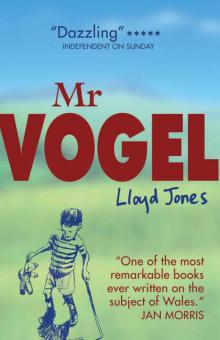 Mr Vogel
Mr Vogel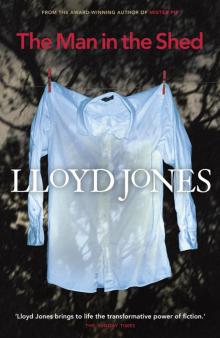 The Man in the Shed
The Man in the Shed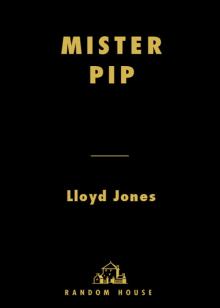 Mister Pip
Mister Pip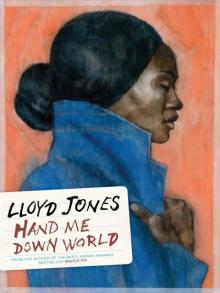 Hand Me Down World
Hand Me Down World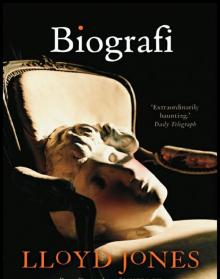 Biografi
Biografi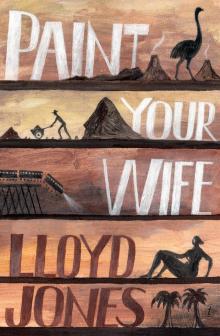 Paint Your Wife
Paint Your Wife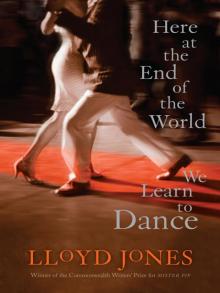 Here at the End of the World We Learn to Dance
Here at the End of the World We Learn to Dance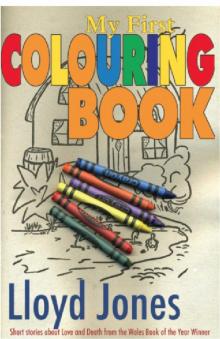 My First Colouring Book
My First Colouring Book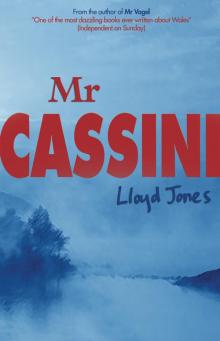 Mr Cassini
Mr Cassini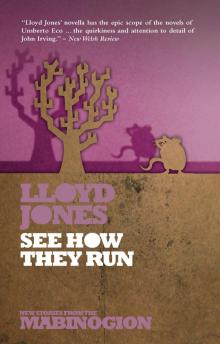 See How They Run
See How They Run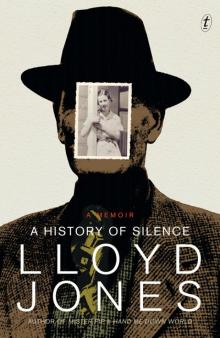 A History of Silence
A History of Silence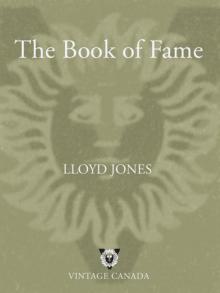 The Book of Fame
The Book of Fame